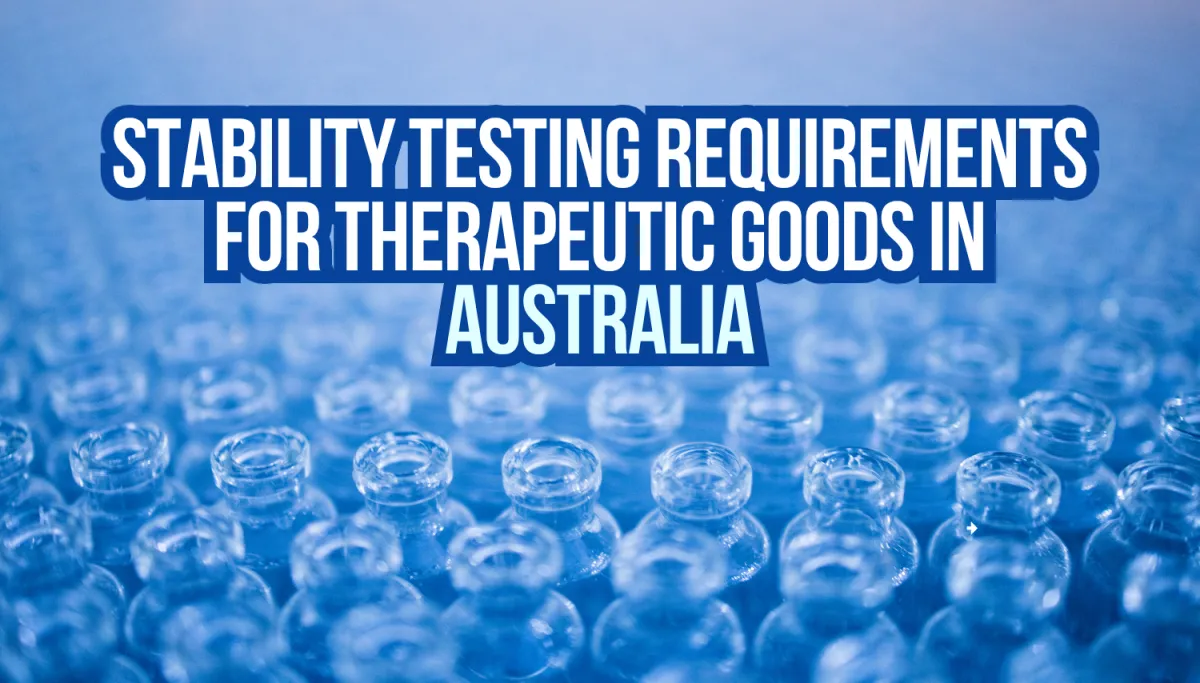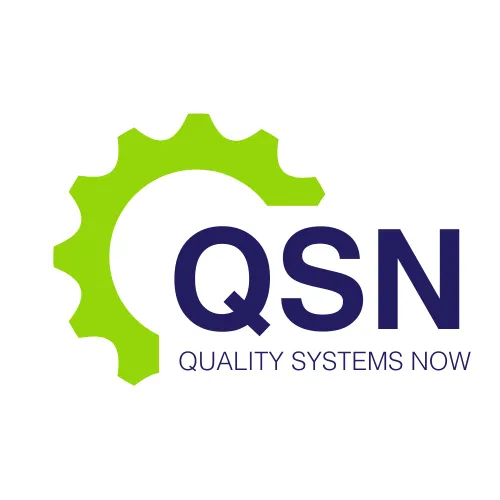NEWS

Stability Testing Requirements for Therapeutic Goods in Australia
Stability testing is a cornerstone of regulatory submissions for therapeutic goods and is essential for demonstrating the shelf life, safety, and efficacy of products throughout their lifecycle. In Australia, the Therapeutic Goods Administration (TGA) enforces specific requirements for stability studies that often diverge from those of other major regulators such as the U.S. Food and Drug Administration (FDA) or the European Medicines Agency (EMA). Failure to align with these requirements can result in product rejections, delayed market entry, or non-compliance notices during GMP inspections.
At QSN Academy, we specialise in regulatory training and compliance services for international therapeutic goods manufacturers seeking to enter the Australian market. This article outlines the scientific and regulatory expectations of the TGA in relation to stability testing, identifies common challenges faced by overseas manufacturers, and discusses strategies to ensure compliant and meaningful stability studies.
Regulatory Framework for Stability in Australia
The TGA adopts the principles outlined in the ICH (International Council for Harmonisation) guidelines—particularly ICH Q1A(R2)—but applies them within the context of Australia’s unique climatic zone (Zone IVb). This climate classification denotes hot and humid conditions, and it has specific implications for accelerated and long-term stability study conditions.
TGA also issues detailed guidance through documents such as the Australian Regulatory Guidelines for Prescription Medicines (ARGPM) and Guidance 17: Stability Testing of Active Pharmaceutical Ingredients and Finished Pharmaceutical Products. These documents outline requirements for medicines, biologicals, and complementary medicines, and are referenced during pre-market evaluation and GMP inspections.
Climatic Considerations: Zone IVb Conditions
Unlike the FDA, which often accepts Zone II or Zone I conditions as standard, the TGA expects stability data to reflect Zone IVb, unless a scientific justification for an alternative is accepted. The standard long-term storage condition for Zone IVb is 30°C ± 2°C / 75% RH ± 5% RH.
For many U.S.-based manufacturers, this presents a challenge as existing stability data often reflects Zone II conditions (25°C/60% RH). While such data can provide supportive information, it is generally insufficient for registration purposes unless bridging studies are conducted. QSN Academy works with clients to develop scientifically justified bridging protocols or to initiate full studies under appropriate ICH Zone IVb conditions.
Stability Study Design and Execution
To meet TGA requirements, stability studies must be designed with a robust, risk-based approach. Key components include:
Matrix Selection: Studies must be conducted on at least three primary batches, including one batch manufactured at production scale.
Storage Conditions: Studies should include long-term, intermediate (where applicable), and accelerated conditions. Photostability and in-use stability studies are also expected where relevant.
Testing Parameters: Critical quality attributes such as assay, degradation products, physical characteristics (e.g., pH, dissolution), and container closure integrity must be measured.
Frequency: Testing should occur at predefined intervals, typically 0, 3, 6, 9, 12, 18, and 24 months for long-term studies, and at 0, 3, and 6 months for accelerated conditions.
TGA also expects method validation reports for all analytical procedures used in stability testing. QSN Academy provides training on ICH-compliant stability protocols and validation strategies specifically tailored to TGA evaluations.
Container Closure System Considerations
Another key requirement is demonstrating the stability of the product in its marketed container closure system. Any changes to packaging materials, configuration, or product-contact surfaces require comparative stability data or bridging studies. The TGA may reject stability data obtained in non-marketed packaging unless a solid scientific rationale is provided.
In addition to primary packaging, TGA also evaluates the performance of secondary packaging (e.g., cartons, overwraps) under real-use conditions. This evaluation includes the impact of light, moisture, and mechanical stress.
QSN Academy advises clients on container-closure evaluation techniques and provides training on regulatory expectations for packaging stability studies, including extractables and leachables risk assessments.
Special Requirements for Biologicals and Complementary Medicines
The TGA applies heightened scrutiny to the stability of biological products due to their complex and labile nature. Biologicals may require stability studies that include potency assays, microbiological integrity, and preservation efficacy under simulated transport conditions. Cold chain validation and temperature excursion data are also expected.
For complementary medicines, stability data is often lacking or improperly designed. While listed medicines do not always require full pre-market data, TGA still expects sponsors to retain evidence supporting shelf life claims. Studies must reflect product-specific risk factors such as botanical variability, interaction of excipients, and microbial stability.
QSN Academy offers specialised modules focused on the stability requirements for biologics and complementary medicines, helping manufacturers generate or adapt data that withstands regulatory review.
Shelf Life Determination and Justification
Shelf life is determined based on a statistical and scientific interpretation of the stability data. The TGA prefers a minimum of 12 months of long-term data at the time of submission, with commitment to continue studies through the proposed shelf life.
Regulatory pitfalls often occur when companies apply shelf life based on accelerated data alone, or when statistical evaluation (e.g., regression analysis) is improperly applied. Shelf lives must be justified using trend analysis and real data, not estimates or extrapolations that lack support.
At QSN Academy, we train regulatory and scientific teams on shelf life justification strategies, including the correct use of statistical tools, out-of-trend data handling, and stability-indicating method evaluation.
Ongoing Stability and Post-Market Surveillance
TGA requires that sponsors continue stability monitoring on commercial batches as part of their ongoing quality assurance obligations. This requirement is particularly relevant for products with known degradation pathways, narrow therapeutic indices, or products stored under variable environmental conditions.
Ongoing stability studies must be conducted at the marketed batch size and within the marketed packaging. Records must be available for GMP inspections and be included in annual Product Quality Reviews (PQRs).
QSN Academy offers guidance on designing ongoing stability programs that meet TGA expectations and align with GMP documentation practices.
Integration with Technical Transfer and Product Development
Stability studies also play a critical role during technical transfer and product scale-up. Changes in manufacturing site, process parameters, or critical materials often necessitate comparative stability studies. These studies must be designed to confirm that the new conditions do not adversely affect the product’s quality profile or shelf life.
Failure to conduct such studies can lead to post-approval variations being rejected or supply disruptions. QSN Academy trains development teams in planning stability-related technical transfer activities and regulatory strategies for lifecycle management.
Get in Touch for a Free Consultation
Stability testing is not simply a regulatory box-ticking exercise—it is a scientific imperative that informs product quality, shelf life, and patient safety. For companies entering the Australian market, aligning stability programs with TGA expectations is essential to avoid delays, rejections, and compliance risks.
American manufacturers must understand that FDA-accepted data may not automatically suffice. Australia's unique climate zone, regulatory frameworks, and evidence expectations demand a tailored approach. QSN Academy offers specialised training and advisory services to bridge this knowledge gap, ensuring that stability data are scientifically robust, TGA-compliant, and strategically integrated into product development and lifecycle management.
With proper upskilling and early planning, manufacturers can mitigate regulatory risks and build a solid foundation for long-term success in the Australian therapeutic goods market.
